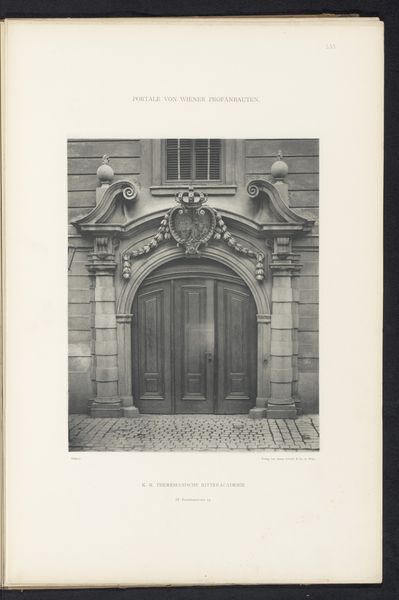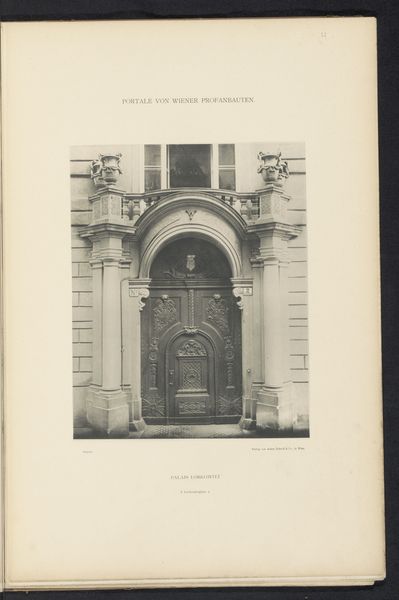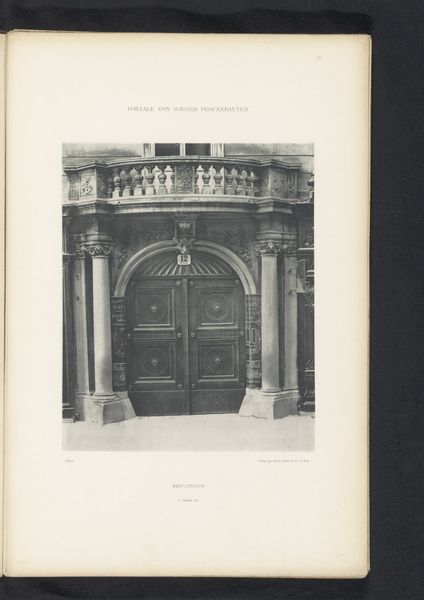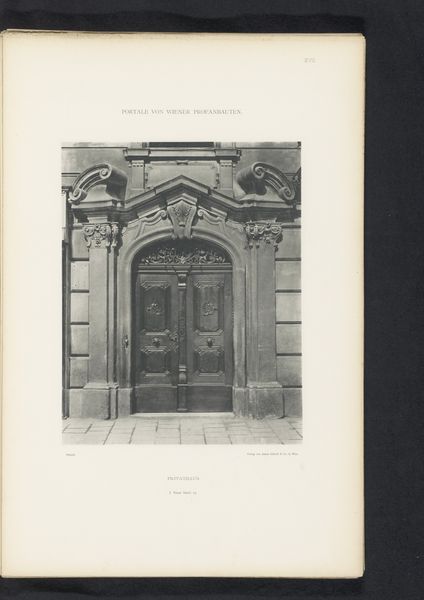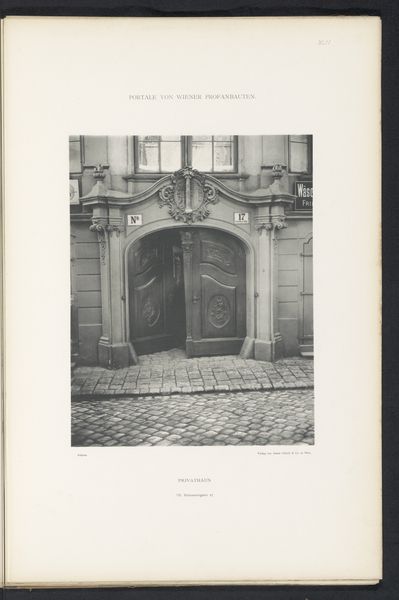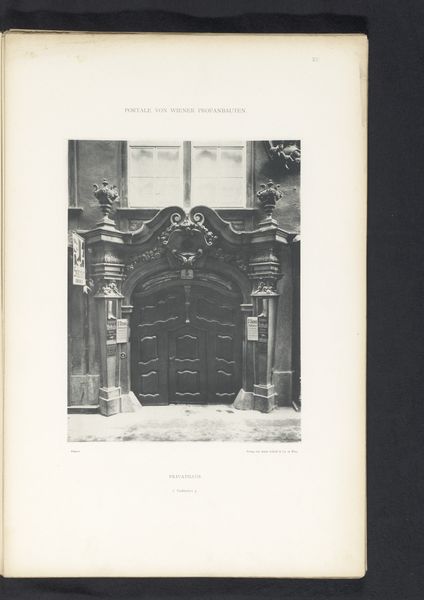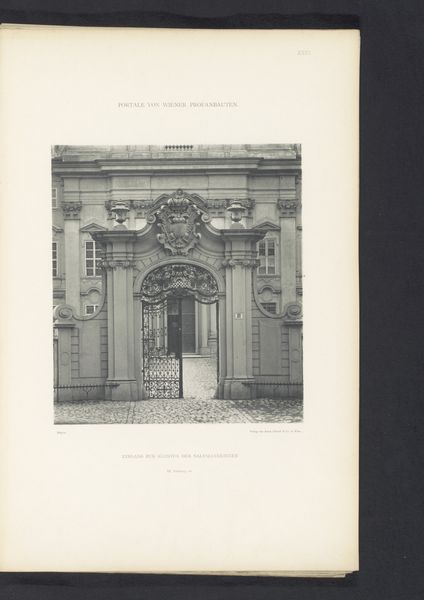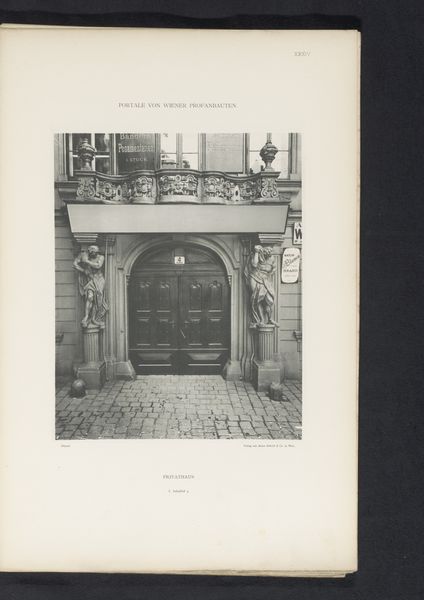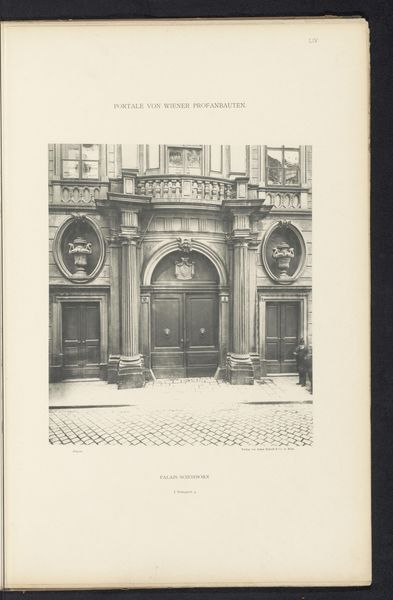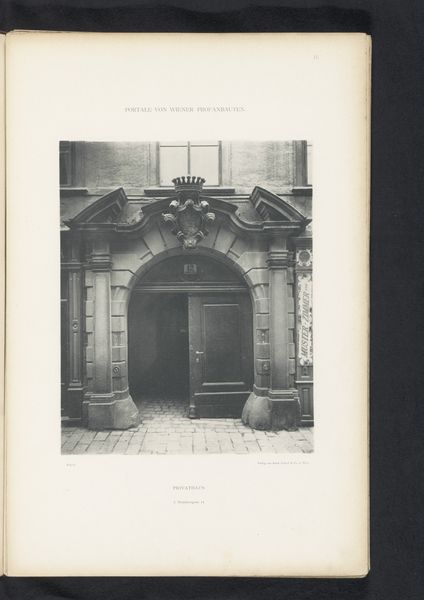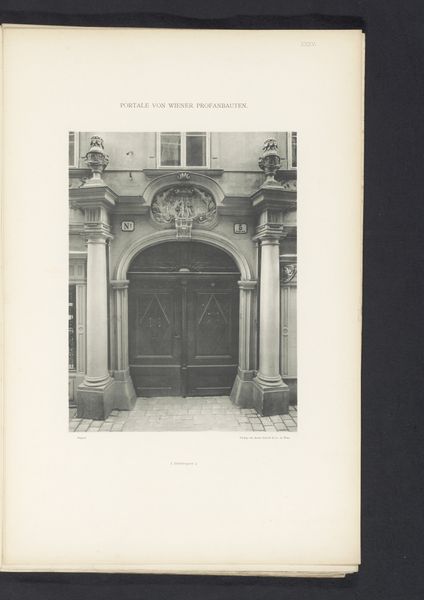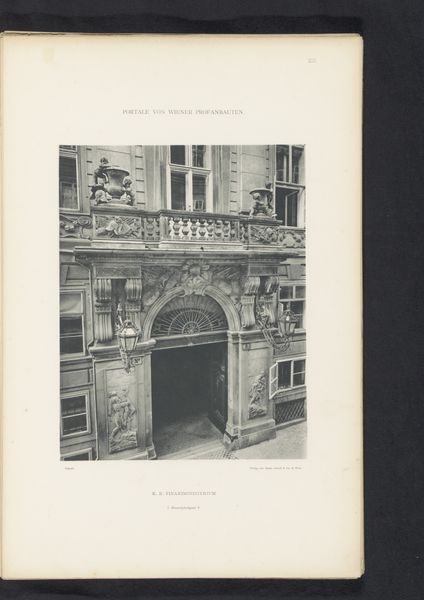
Dimensions: height 266 mm, width 215 mm
Copyright: Rijks Museum: Open Domain
Editor: This print, "Toegangsportaal van de Alser Kaserne te Wenen," dating from before 1894, shows the entrance portal of the Alser Kaserne in Vienna. I'm struck by the imposing nature of the architecture captured in this image; the symmetry and ornamentation seem to express authority. What do you see in this piece? Curator: I see this not merely as architecture, but as a visual manifestation of power structures prevalent in late 19th-century Vienna. The Neoclassical style, with its emphasis on order and symmetry, evokes the Roman Empire, a deliberate aesthetic choice used to legitimize the Austro-Hungarian Empire’s rule. Consider the Alser Kaserne itself; what was its function? Who did it serve? And what does the grandeur of its entrance communicate about the values of that institution? Editor: It was a military barracks, so it served the army. I guess it’s projecting strength and permanence. Does that relate to other art of the time? Curator: Absolutely. Think about the art that was being promoted by the Academy, contrasting it with the burgeoning modernist movements. The rigid adherence to classical forms in institutions like the Alser Kaserne becomes a statement against the shifting social and artistic landscape. This photograph, even as a seemingly objective document, participates in the narrative of upholding established power against calls for change. It almost begs the question, who were these structures really protecting, and from whom? Editor: So, it's not just a building; it’s a symbol in a bigger conversation. I hadn't thought about the ways architectural choices are making arguments about social order. Curator: Precisely! By engaging with these historical and social contexts, we can understand how art, even in the form of architecture and its documentation, functions as an active participant in the ongoing dialogue about identity, power, and resistance. Editor: That gives me a lot to think about in terms of how architecture functions, and about the intentions behind it, as well. Thank you!
Comments
No comments
Be the first to comment and join the conversation on the ultimate creative platform.
